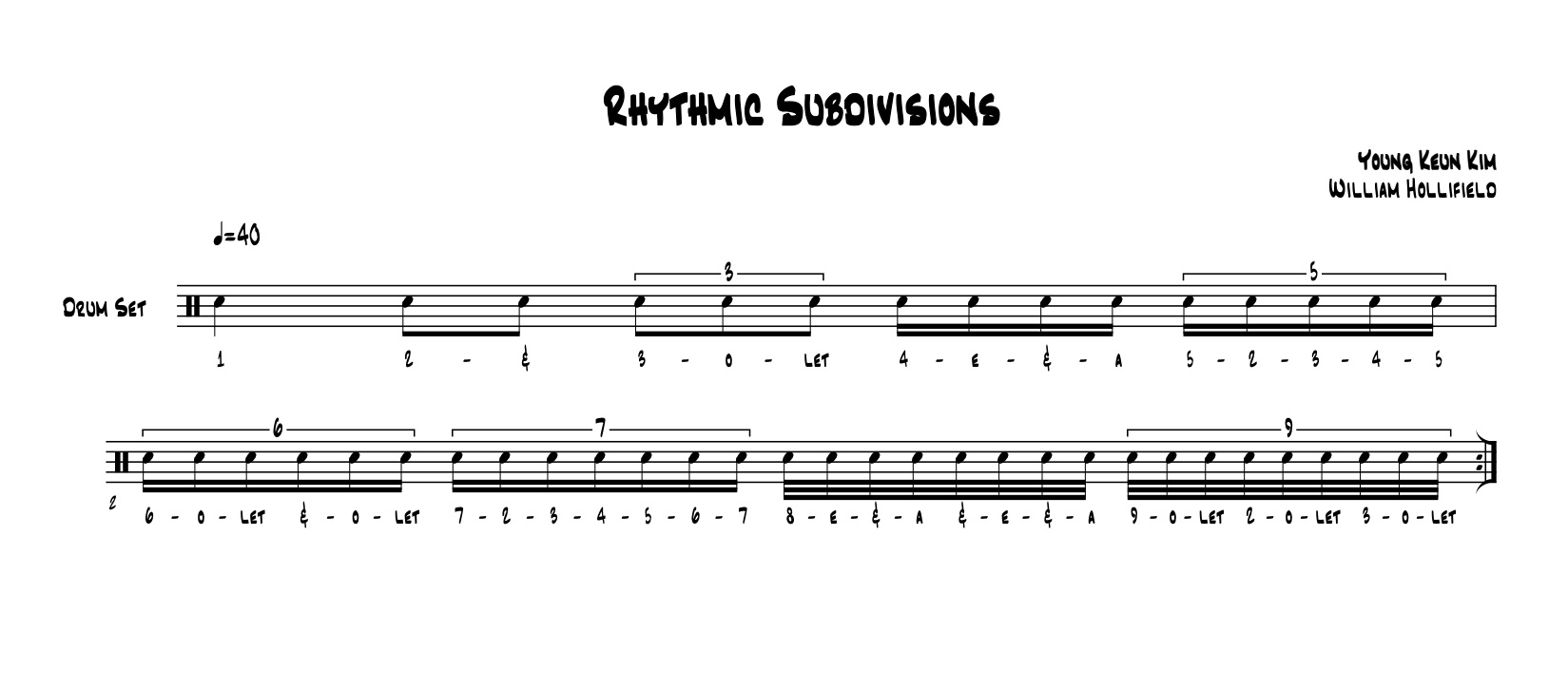Rhythm Exercises: #1 Rhythmic Subdivisons
/This is the first in a set of rhythmic exercises that I'll be posting to this site. So many times we overlook the importance of having Really. Good. Time. This is something that will help in every aspect of playing, e.g. improvising, playing etudes and solo pieces, playing in an ensemble, playing pieces with no definable time, and even sight reading (yes, I said sight reading). This was first shown to me by Mr. Kim, one of the teachers that I met at Georgia Governor's Honors Program when I was in high school. He said then, and I've found in my own teaching, that students working on their sight-reading always think that the thing holding them back is their ability to read notes when, in actuality, it's their sense of rhythm that keeps them from reading something fluidly. This is an exercise that he gave us to help with that:  It looks simple, but let me explain how to play this. You can't just set a metronome and count. If you're going to internalize these subdivisions, you have to keep time and rhythm in two different ways - you can't just use your foot. First, set your metronome on quarter note equals 40. Now, clap along with the metronome; your hands are now keeping the time. Then, you're going to say the rhythm (the part that's written on the staff) while you continue to clap the time along with the metronome. Repeat this for at least a couple of minutes checking that you're not rushing or dragging and get use to going from groups of nines all the way back to quarter notes to notice how changing the subdivision feels. To solidify this, switch the time and rhythm. Keep the time with your mouth by saying "1, 2, 3, 4, 1, 2, etc..." and clap the rhythm. For some of you the first way will be more difficult, for others, the second will. Here's an audio clip of this being played with wood block keeping the quarter note pulse and snare drum keeping the rhythm:
It looks simple, but let me explain how to play this. You can't just set a metronome and count. If you're going to internalize these subdivisions, you have to keep time and rhythm in two different ways - you can't just use your foot. First, set your metronome on quarter note equals 40. Now, clap along with the metronome; your hands are now keeping the time. Then, you're going to say the rhythm (the part that's written on the staff) while you continue to clap the time along with the metronome. Repeat this for at least a couple of minutes checking that you're not rushing or dragging and get use to going from groups of nines all the way back to quarter notes to notice how changing the subdivision feels. To solidify this, switch the time and rhythm. Keep the time with your mouth by saying "1, 2, 3, 4, 1, 2, etc..." and clap the rhythm. For some of you the first way will be more difficult, for others, the second will. Here's an audio clip of this being played with wood block keeping the quarter note pulse and snare drum keeping the rhythm:
[wpaudio url="http://williamhollifield.com/wp-content/uploads/RhythmicSubdivisionsWithAccentsAndWoodBlock.mp3" text="Rhythmic Subdivisions (Snare & Wood Block)" dl="0"]
Above & Beyond: To make this more interesting you can use drumsticks and a drum pad. Time in one hand, rhythm in the other, then switch. This will show you two things 1) how truly accurate you have to be with rhythm to keep time well and 2) how keeping accurate rhythm will later help you keep time well.















